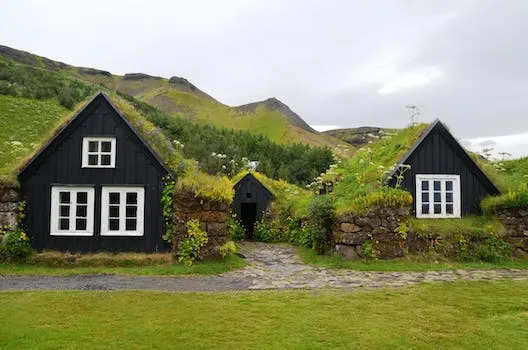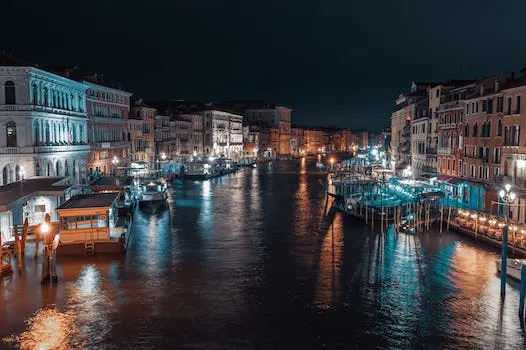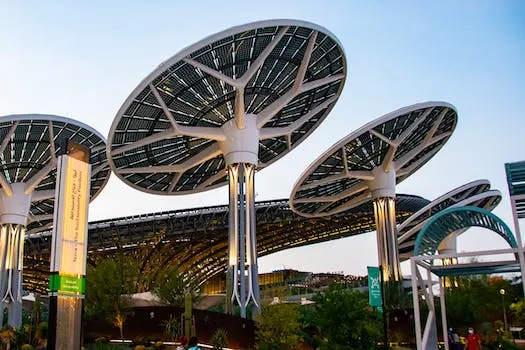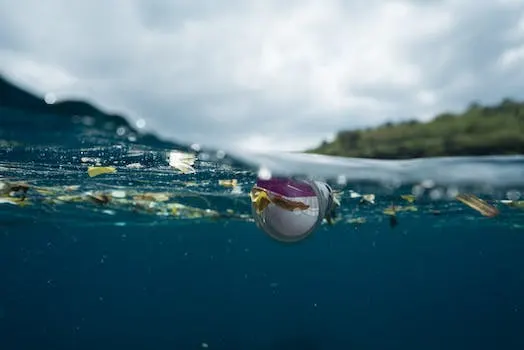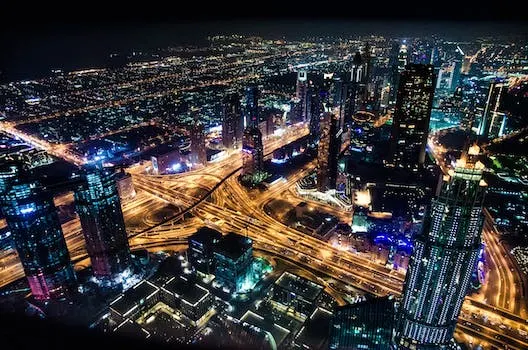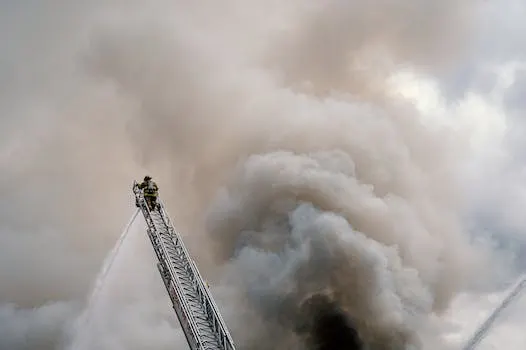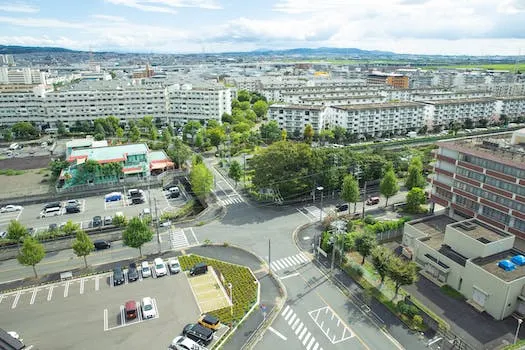
The Benefits of Green Infrastructure for Our Planet
green infrastructure is an essential part of sustainable development, providing a range of benefits to our planet. From reducing pollution and conserving resources to creating green spaces and improving air quality, green infrastructure is a term used to describe the practices and technologies that help improve the environment. Green roofs are covered with growing media and vegetation that enable rainfall infiltration and evapotranspiration of stored water, while green infrastructure practices help mitigate air pollution in urban areas by sequestering pollutants through vegetation. Additionally, green infrastructure can reduce air temperatures and pollution, improve water quality, create more natural spaces, provide solutions for urban challenges such as flooding or heat waves, as well as enhance community safety and quality of life.
The advantages of implementing green infrastructure are numerous; it is effective in mitigating air pollution in cities across the world while also being economical. It means planting trees or restoring wetlands instead of constructing costly hard engineering solutions such as dams or levees which can be expensive to maintain over time. By investing in these natural solutions we can make our planet healthier and greener for future generations while also providing immediate benefits such as improved air quality for those living in urban areas today.
What is Green Infrastructure?
Green infrastructure is a set of practices and technologies that are used to protect and enhance the natural environment. This includes activities such as using renewable energy sources, planting trees and vegetation, protecting wetlands and other natural areas, and using sustainable building materials and techniques. By utilizing green infrastructure, we can reduce our carbon footprint, conserve resources, and promote biodiversity. In 2019 Congress enacted the Water Infrastructure Improvement Act which defines green infrastructure as "the range of measures that use natural systems or engineered systems to provide clean water, conserve ecosystem values and functions." Green infrastructure approaches currently in use include green roofs, trees and tree boxes, rain gardens, vegetated swales pocket wetlands infiltration basins bioswales permeable pavements living walls urban forestry stormwater harvesting rainwater harvesting constructed wetlands graywater reuse urban agriculture rooftop gardens vertical farming aquaponics hydroponics phytoremediation bioretention ponds living shorelines beach nourishment oyster reefs mangrove restoration coral reef restoration seagrass restoration.
Green infrastructure also refers to using or enhancing natural systems to absorb pollutants from the air or water while protecting communities from flooding or other disasters. It is a network that provides “ingredients” for solving urban challenges by building resilience against climate change impacts such as extreme weather events like floods or droughts. Examples of green infrastructure solutions include planting trees for shade; creating buffer zones around rivers; restoring wetlands; installing permeable pavement; constructing bioswales; implementing stormwater harvesting techniques; utilizing graywater reuse systems; establishing rooftop gardens with vertical farming methods like aquaponics or hydroponics; employing phytoremediation processes for soil remediation purposes; setting up bioretention ponds for stormwater management purposes ; establishing living shorelines with beach nourishment projects ; restoring oyster reefs ; replanting mangroves ; rebuilding coral reefs ; reviving seagrass beds . All these activities help reduce our carbon footprint while conserving resources at the same time promoting biodiversity in our environment .
The Benefits of Green Infrastructure
Green infrastructure has numerous benefits for both the environment and the people living in it. For example, green infrastructure reduces and treats stormwater at its source while delivering other environmental, social, and economic benefits. This is done by relying on plants, soil, and natural systems to manage rainfall runoff. Additionally, green infrastructure helps mitigate air pollution in urban areas by sequestering pollutants with vegetation. Scientists have also found that parks and wetlands help to retain water in the soil as well as filter out pollutants from run-off.
Green infrastructure also provides a number of aesthetic benefits such as amenity and landscape design which contributes to a city's character and identity. Furthermore, trees and green infrastructure provide Urban Cooling which can be beneficial during hot summer days when temperatures are high. Finally, green infrastructure provides a better way to manage stormwater by creating natural spaces where water can be absorbed into the earth or processed by plants instead of running off into waterways or sewers where it can cause flooding or contaminate drinking water sources with pollutants. All these factors make green infrastructure an important tool for improving our planet's health while providing numerous other benefits for people living in urban areas around the world.
Reducing Pollution
Green infrastructure is an effective way to reduce pollution and improve air quality. By utilizing green roofs, vegetation, and permeable pavement, pollutants can be captured before they enter the atmosphere. Additionally, green infrastructure can help manage stormwater runoff which is a major cause of water pollution in urban areas. Green infrastructure practices such as vegetated rooftops, roadside plantings, absorbent gardens and wetlands capture and filter pollutants such as heavy metals, nutrients, sediment and pathogens from stormwater runoff. This helps to minimize the negative effects of development on the environment while also recharging groundwater levels and improving water quality. Wetlands also serve as a habitat for wildlife while decreasing runoff levels. Overall green infrastructure provides many benefits for our planet by reducing pollution levels while providing habitats for wildlife.
Conserving Resources
Green infrastructure is an important tool for conserving resources and protecting our planet. By utilizing renewable energy sources, green roofs, and other green technologies, we can reduce the strain on our natural resources. Green roofs are a great example of this; they help manage stormwater and reduce energy costs for cooling. Additionally, green infrastructure practices can mitigate air pollution in urban areas by sequestering pollutants with vegetation.
Green Infrastructure (LID) is a sustainable approach to urban planning and site design that helps conserve resources by reducing the need for energy and water consumption. It includes activities such as using renewable energy sources, utilizing green roofs and other green technologies, constructing permeable pavement, increasing community interest in sustainability initiatives, recharging groundwater levels, decreasing runoff levels to improve water quality and restore aquatic habitats.
A green roof system atop a building helps manage stormwater while also reducing energy costs for cooling by up to 75%. This type of system is covered with growing media which provides insulation from extreme temperatures as well as absorbs rainwater runoff from the roof surface. The importance of sustainable water resource management cannot be overstated; it’s essential that we take steps to conserve our natural resources whenever possible.
Green Infrastructure also has many benefits beyond conserving resources; it increases community interest in sustainability initiatives while providing habitat for wildlife species such as birds or insects that may not have access to traditional open spaces due to urbanization or development projects. It also improves air quality by sequestering pollutants with vegetation which can help mitigate air pollution in urban areas where smog levels are often high due to traffic congestion or industrial activity nearby.
Overall Green Infrastructure is an effective way of conserving resources while improving air quality in cities around the world - making it an invaluable tool when it comes to protecting our planet’s future health!
Creating Green Spaces
Creating green spaces in urban and suburban areas is an important part of green infrastructure. Planting trees, vegetation, and constructing permeable pavement are all activities that can help to create these green spaces. These green spaces can provide people with access to nature in their communities while also promoting biodiversity. Green roofs are a great example of this type of infrastructure as they are covered with growing media and vegetation that enable rainfall infiltration and evapotranspiration of stored water. Green infrastructure also includes other water management practices such as roadside plantings, absorbent gardens, bioswales, rain gardens, and more. All these features integrate plants and other natural elements into urban spaces to make them more sustainable for the environment.
Green areas come in many sizes from small parks to large national parks which can be found at different scales from neighborhoods to cities or rural settlements. These areas provide environmental benefits such as reducing flood risk or improving air quality by absorbing pollutants from the air. Planning zones can be used to guide the development of a green infrastructure in small cities, towns or rural settlements so that it is tailored specifically for each area's needs while still providing environmental benefits for everyone involved.
Creating green spaces through green infrastructure is an important step towards making our planet more sustainable for future generations by providing access to nature while also promoting biodiversity within our communities. By using different planning zones we can ensure that each area has its own tailored plan which will benefit both people living there as well as the environment itself by reducing flood risk or improving air quality through absorbing pollutants from the air among many other benefits provided by these types of projects
Improving Air Quality
Green infrastructure is a term used to describe the use of vegetation, green roofs, and other green technologies to reduce pollutants and improve air quality. Green roofs, green streets, and other forms of GI are designed to capture stormwater runoff which can carry bacteria and trash into urban areas. By utilizing vegetation for air pollution mitigation, these practices help reduce smog in cities. Trees are one of the most effective methods for improving air quality as they provide the highest removal rate of pollutants from the atmosphere. Additionally, trees can also provide environmental benefits such as improved water quality and increased biodiversity. Combining different types of GI such as green walls with trees can further enhance their effectiveness in reducing air pollution levels. With its many benefits for both human health and the environment, implementing green infrastructure is an important step towards improving our planet's air quality.
Conclusion
In conclusion, green infrastructure is an essential part of sustainable development and has numerous benefits for both the environment and the people living in it. By utilizing green infrastructure, we can reduce our carbon footprint, conserve resources, and promote biodiversity. Green infrastructure reduces stormwater runoff by storing significant amounts of water in their growing media which is eventually evaporated from the soil. It also helps mitigate air pollution in urban areas by sequestering pollutants with vegetation. Additionally, green infrastructure plays a central role in fighting climate change impacts by protecting us against floods and other environmental disasters. Ultimately, green infrastructure can help to make our planet a healthier and greener place to live for generations to come.
